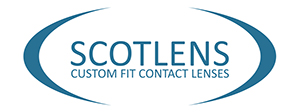Module 2 of 6
NIGHT LENS PRINCIPLES
Learning Outcomes
After completing this module you should understand the:
- Benefits of using uncomplicated language when communicating orthokeratology to patients
- NOCTURNAL™ lens design
- Corneal changes that happen due to OK night lens wear
COMMUNICATING ‘NIGHT LENSES’
Communicating orthokeratology as ‘night lenses’ has a number of advantages.
Saying: “We can correct your myopia with specs, day lenses or night lenses…”
- This communicates 3 options that are similarly affective and accessible to your patient. One option does not sound more complicated than another.
- Using ‘day lenses’ groups and simplifies the various CL options you may offer AND helps patients understand that ‘night lenses’ will only be worn at night.
- Night lenses is a term that patients can say, “Do I have to wear the night lenses every night?”
- Reducing barriers to communication between your patient and you.
AND … “I have started wearing night lenses, they are amazing!”
- Enabling them to tell their friends about night lenses in an uncomplicated way.
For the general public, eye examinations can be full of phrases that baffle them.
There is so much of this language that we take for granted.
Think about describing each step of the eye test without using words you don’t have to explain (prescription, astigmatism, pressures and fields for example) as most patients will be too embarrassed to ask for clarification.
In the case of night lenses, ceasing to use the terms orthok, orthokeratology or the brand (e.g. Nocturnal) in front of patients is vital, as they do not understand it and it can be off-putting.
If you use the term night lenses in all staff communication, this also helps prevent your staff, and you, defaulting to the medical terms or brand.
Patients will then use the terms they can communicate and understand.
Clearer communication leads to fewer mis-communications.
WHEN TO USE THE TERM ‘ORTHOKERATOLOGY’
Night lenses use ‘orthokeratology’, a process of temporarily reshaping the cornea to correct ametropia. It is generally successful for myopes up to -5.00 dioptres in eyes with astigmatism up to -1.50 dioptres.
A custom-made contact lens when worn only at night gently moulds the corneal epithelium. The gentle suction forces under the lens are responsible for building up epithelium cells, changing the corneal shape, correcting the myopia.
When worn nightly the epithelium changes become stable, providing myopic correction throughout the patient’s waking hours.
This process is completely reversible, with the cornea returning to its original shape upon discontinuation.
WHAT ARE NIGHT LENSES?
Night lenses are ‘reverse geometry’ contact lenses made to the highest precision that produce a tear lens between the eye and the lens that has a minus powered shape.
This tear lens shape is created with a flat base curve and steeper reverse curve in the lens geometry.

CORNEAL CHANGES
Over the course of approximately two weeks the tear lens causes the cornea to reshape.
The central corneal epithelium becomes thinner because of positive pressure under a flat central curve of the lens, while the mid-periphery becomes thicker due to the negative pressure created by the tear lens thickness.
This change in the thickness of the epithelial cells creates a new refractive surface for the cornea and temporarily corrects the myopic refraction.
Topography is used to measure these changes, showing the lens fitting behind the closed eyelid.

NOCTURNAL™ CUSTOM ORTHOK NIGHT LENS
NOCTURNAL™
Successfully fitted since 2003. This design has one of the larger optic zone diameters available, providing improved quality of vision and minimising glare.
This design provides optimal correction up to -5.00 and highest initial fitting success whether ordered from either topography or Ks and Rx.
Higher prescription and toric fitting are available due to the custom fitting nature of the design.

NOCTURNAL™ MC+
Using a small optic zone diameter is being shown to slow axial length growth even more than already achieved with standard orthok night lens designs.
The NOCTURNAL™ MC+ design allows you to select the OZ size, balancing the vision correction with a small treatment zone, size maximizing the outcomes for the patient.
This MC+ can be supplied with OZ of 6.00, 5.50, 5.00 or 4.50.

Spherical / Toric Fitting
Toric lens fitting is needed to maintain the gentle tear suction forces under the lens.
This is supplied when a calculated alignment zone tear thickness exceeds 20 microns difference between meridians

SUMMARY
- Avoiding using complicated medical terminology like ‘orthokeratology’ and replacing it with ‘night lenses’ (a) removes barriers for patient communication and (b) helps patient-to-patient communication.
- NOCTURNAL™ lenses are custom made 5 curve lens design, fitted with toric alignment when corneal toricity exceeds 20um.
- Corneal epithelium thickness temporarily changes following lens wear. These changes correct the myopia and are monitored with topography.
